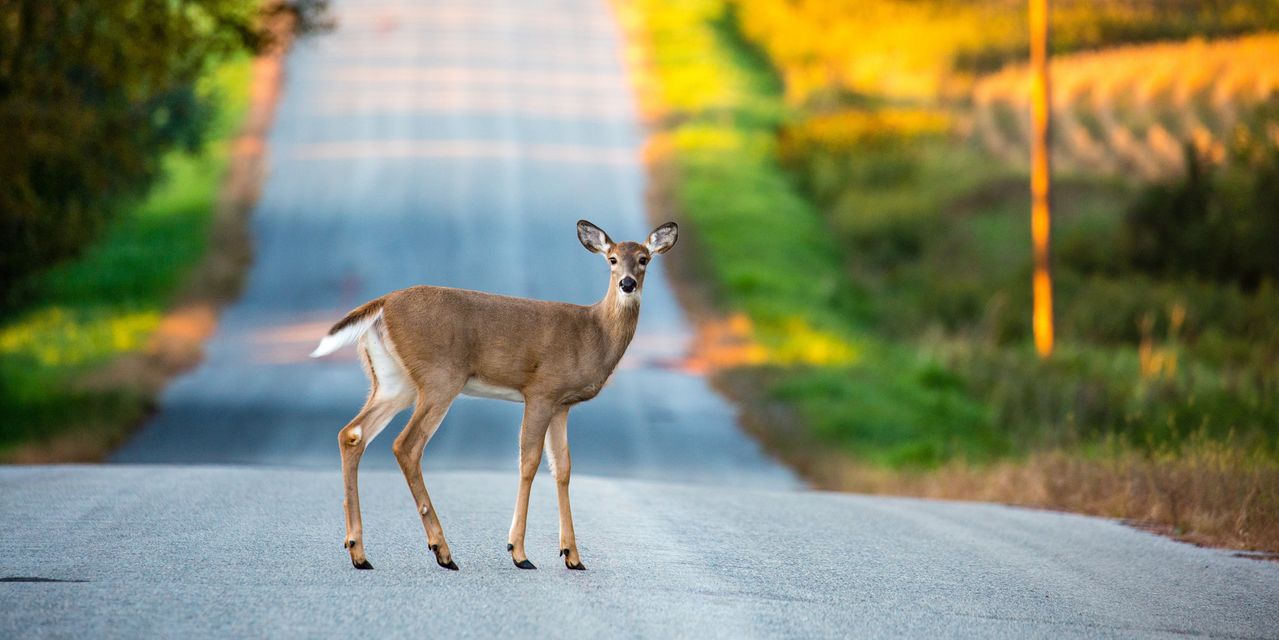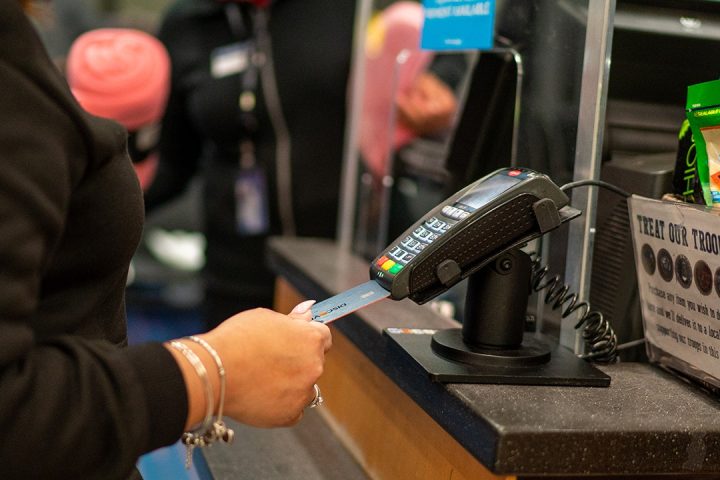Across most of North America, deer are getting restless. Reckless. Willing to take a chance on love.
It’s deer mating season in many states — a heady time for our ungulate friends, but a wary time for commuters already dealing with clock changes.
Auto insurers say the rate of deer strikes peaks every November. But they’re watching closely to see what happens this year. Because last year, America saw a sharp drop in car-deer accidents reported to insurance companies.
And your insurer doesn’t know why.
Number dropped for pandemic, then dropped again
The Insurance Institute for Highway Safety, or IIHS, is a car safety lab funded by a consortium of insurance companies. The institute has access to more crash data than perhaps anyone else.
IIHS researchers say they understand most of the recent pattern in deer strikes. “After holding steady for many years, November animal strike claim frequency dropped from 14.1 claims per 1,000 insured vehicle years in 2019 to 12.6 claims per 1,000 insured vehicle years in 2020.” An insured vehicle year represents one vehicle insured for one year or two for six months.
The 2020 drop can be traced to the COVID-19 pandemic. The deer were probably doing what they usually do. But we weren’t. Fewer drivers on the roads at dawn and dusk, when deer are most active, meant fewer deer strikes. These ungulates are crepuscular. There will be a quiz.
Also see: The 9 things that are most likely to affect your auto insurance rates
Things returned to normal in 2021, the institute says. Americans resumed near-normal driving habits, and deer strike “claim frequency rebounded to around the 10-year average,” or 13.6 claims per 1,000 insured vehicle years.
Then, last year, the number plunged. Last November, claim frequency hit 11.9 per 1,000 — lower than in peak lockdown.
Plus: Most U.S. workers still commute by car, and the cost is steep — here are a few ways to save
Car crash experts scratching their heads
Insurers aren’t sure why. “This is a real head-scratcher,” said Matt Moore, senior vice president of the Highway Loss Data Institute (the number-crunching arm of the IIHS).
“It might be related to changes in commuting patterns as people continue to work from home, or we might just be seeing variations in the data. Time will tell.”
“It’s possible that some newer automatic emergency braking systems, especially those designed to prevent pedestrian crashes, can also prevent animal strikes,” the IIHS says. But they’re skeptical.
Those systems are too new to be widespread, the institute says. And IIHS research shows they don’t work as well in the low-light situations where deer strikes are most common.
High-tech headlight systems like those that turn to shine around corners could be a factor. “But there was not a big change in the U.S. fleet between 2021 and 2022 with respect to headlights, either,” researchers say.
And there’s no evidence of fewer deer. “State wildlife departments generally believe their deer populations to be stable or increasing, particularly in urban areas,” the IIHS says.
Be sure to read: These are 2023’s safest new cars
Be extra careful this time of year
For now, last year’s dip in deer deaths is a mystery. But it’s not a reason for drivers to relax.
Insurers recommend that drivers slow down in wooded areas this time of year, use their high beams when possible, and remember that deer tend to travel in groups. If one crosses the road in front of you, assume several more are behind it about to do the same. If a deer freezes in the road in front of you, brake hard rather than swerving.
This story originally ran on KBB.com.
Read the full article here






